Last month I talked about some of the newer roses coming onto the market for the first time. For this month, I’m going to talk about roses that have been around a very long time, yes by that I mean heritage roses.
As I write this, I am about to head off to China for an International Rose Conference which includes a number of visits and lectures on Heritage roses which are a large part of the event. After all, China has many wild roses which we will get to see as well.
What is a Heritage Rose? Well, even the experts haven’t been able to come up with a definite answer. It has long been thought that the first Hybrid Tea ‘La France’ released in 1867 was the first modern rose so anything before that was a heritage rose. But as we know, time keeps rolling on and a few years ago, 1900 was selected as the cut off date. Other people consider such roses as the Hybrid Musk’s bred in the 1920’s heritage roses.
Whatever the date, heritage roses are the tried and true survivors of the rose world having survived where other varieties have fallen by the wayside. Heritage varieties generally are very easy to grow, generally requiring little if any spraying for pests and diseases. Many also resent hard pruning and for most, removing dead wood and trimming to shape is all that is required. They have a range of beautiful blooms from single five pedalled blooms to very double forms, many of which have beautiful scents. Once the blooms are finished, many have a good crop of hips which provide extra interest and colour. On the downside, many varieties only will bloom once and some can get very large in size.
Heritage varieties can be grown in almost any garden. There are smaller growing types suitable for smaller gardens and even pots through to large rambling monsters that can cover sheds and fences. They are great grown with other plants so can be used in any landscaping situation and yes, they can be grown with their more modern counterparts.
Some of the popular heritage roses are:
‘Cecile Brunner’ (China) Small button hole type pale pink blooms are produced in large clusters. Bush and climbing forms available. Repeats blooms.
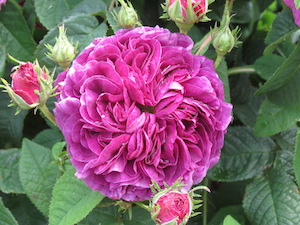 ‘Charles de Mills’ (Gallica) pictured left Large double blooms of crimson purple. Medium growing with lush green foliage.
‘Charles de Mills’ (Gallica) pictured left Large double blooms of crimson purple. Medium growing with lush green foliage.
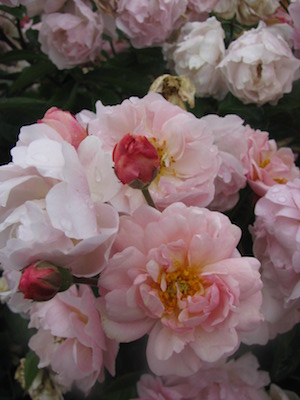 Cornelia’ (Hybrid Musk) pictured right Clusters of coral pink blooms produced throughout the season. Good scent and produces a good crop of hips in autumn.
Cornelia’ (Hybrid Musk) pictured right Clusters of coral pink blooms produced throughout the season. Good scent and produces a good crop of hips in autumn.
‘Fantin Latour’ (Centifolia) Light pink very double blooms. Very fragrant. Tall, arching plant. Once flowering.
‘Jean Ducher’ (Tea) Cupped blooms of soft salmon pink with yellow and peach. Fragrant. Medium growing.
‘Lady Hillingdon’ (Tea) Very fragrant apricot gold blooms are produced throughout summer. Bush and climbing forms are available.
‘Mutabilis’ (China) Masses of single blooms that change colour from soft yellow to pink and red. Very effective en masse and never without flowers. Can form a large bush and repeats blooms. Very healthy.
‘Madame Hardy’ (Damask) Pure white double blooms with a green ‘eye’. Medium height, very fragrant and once flowering.
‘Mme Alfred Carriere’ (Noisette) Cream blooms with light pink shading, very double in form and very fragrant. Vigourous grower with good health and repeats.
‘Souvenir de la Maimaison’ (Bourbon) Blush white blooms with quartered, flat blooms and repeats. Good scent.
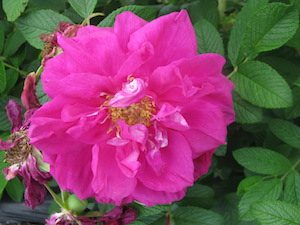 ‘Roseraie de la Hay’ (Rugosa) pictured left Double purple crimson blooms, good fragrance and repeats well. Forms hips in the autumn. Very hardy.
‘Roseraie de la Hay’ (Rugosa) pictured left Double purple crimson blooms, good fragrance and repeats well. Forms hips in the autumn. Very hardy.
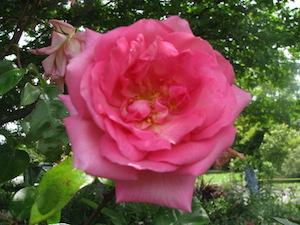 ‘Zephrine Drouhin’ (Bourbon) pictured right
‘Zephrine Drouhin’ (Bourbon) pictured right
A climber with bright pink blooms, thornless and fragrant.
For those interested in heritage roses, there are local branches of Heritage Roses New Zealand (Inc) all around New Zealand. See www.heritageroses.org.nz for more information. They also produce a great journal four times a year with articles and photos related to heritage roses here and overseas.
In the rose garden for June:
- New seasons roses are store now, get in early to get the new and popular varieties before they sell out.
- Plant new roses. Keep them moist before and after planting as dehydration is a leading cause of plant failure.
- Continue to tidy up around the roses remove fallen leaves and debris and put in the rubbish. Do not compost.
- For many areas, it is still a bit early to prune. You can however remove any dead or diseased wood early before the main pruning time arrives.
- Check your secateurs are sharp before pruning and that other equipment like pruning saws and loppers are in good working order. A small wire brush is also useful for brushing the bud unions to encourage new growth.
Local rose societies around New Zealand hold free rose pruning demonstrations over the winter months, see www.nzroses.org.nz for further details.
By Hayden Foulds. Read more here.









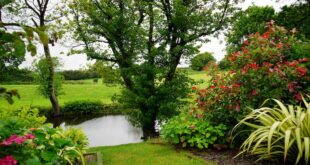
Join the Discussion
Type out your comment here:
You must be logged in to post a comment.